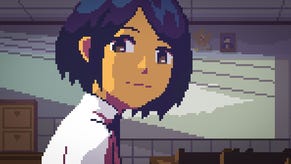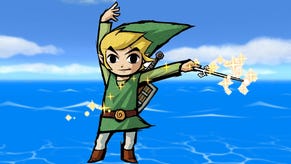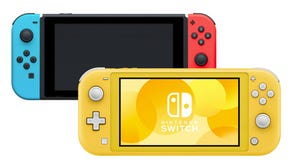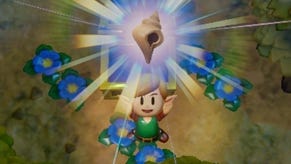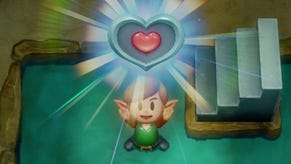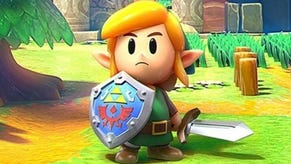Retrospective: The Legend of Zelda: Link's Awakening
THIEF of time.
On the surface, The Legend of Zelda: Link's Awakening may appear to be an offbeat side-story to the main series. An oddball tale originally released on the Game Boy, it sheds some of the Zelda series' staples and fills the gaps with its own hallucinogenic story that includes more than a few left-field references to the world of Mario.
But I didn't know any of that when I first played Link's Awakening. It was my first Zelda and, years before Ocarina of Time defined the series' possibilities for vast 3D worlds, the game's comparatively modest 2D island map offered up an entire continent to me. I would explore every nook and cranny.
Link's Awakening launched in the era before mass internet when, for me, games lasted months, gameplay secrets took days to discover and strategies were passed between me and my friends by word of mouth alone.
I was helped, quite considerably, by a friend of mine who'd completed the game already. Day after day we'd meet in the playground (I was eight at the time, should you be getting any funny ideas) and he'd guide me through the next section or tell me how to get that one last chest on the dungeon map I hadn't yet claimed as my own.
Some elements remain typical of the series. The game's eight dungeons, for example, are standard Zelda fare, each room holding its own ingenious riddle to solve - and later exploits, such as the pillar-demolishing Eagle's Tower puzzle, can still be infuriating on subsequent play-throughs.
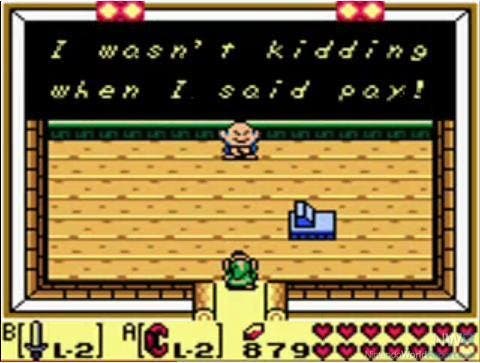
But other aspects of the game are markedly different. The setting is away from Hyrule for the first time, and series villain Ganon sits the entire game out. The Master Sword is missing and Zelda is also absent, bar a mention in one initial line of dialogue.
While every Zelda game, even the few true sequels, can be played perfectly well as its own adventure, Link's Awakening's story is undoubtedly a standalone episode within the overall saga. The game ditches the standard Princess-getting-kidnapped plot, with Link's Awakening's darker tale proving the series strong enough to exist without such a simple story mechanic.
The quest begins with Link sailing alone across a dark and stormy sea, our hero illuminated only by flashes in the lightning-cracked sky above. Shipwrecked, Link washes ashore on Koholint Island, waking in the care of the game's love interest, Marin. But Koholint Island, players quickly discover, is no normal tropical getaway.
Guided throughout the game by a mysterious owl character, Link is told he cannot hope to leave Koholint while a creature named the Wind Fish is sleeping. As the game progresses, players discover that the whole island exists only as a dream, a world concocted by the Wind Fish that has been invaded by nightmare monsters Link must defeat in order to leave.
His final task is to wake the Wind Fish, but in doing so Koholint Island and all of its inhabitants will cease to be. As mid-game plot twists go, it's an eye-opener.
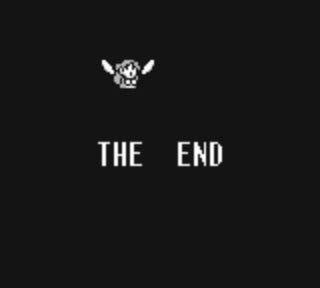
Throughout the quest, Link is tasked with collecting an orchestra of eight Wind Fish-waking instruments (making it more of a chamber orchestra, really), each recovered after felling one of the game's eight dungeon bosses. You'll have the majority under your belt before the above bombshell is broken to you. Finding out your mini monochrome (until the Game Boy Color remake) world of adventure will be taken away from you when you complete the game leaves a lasting impression as, by this point, players will know the doomed island and its peculiar residents well.
Like most Zelda games, it doesn't take long to fall in love with the characters who surround you, each with their own offbeat personality and quirky mannerisms. There's rocking chair-bound old man Ulrira who suffers from shyness in person, but is a reliable source of help when called from one of the island's telephone booths, or loner letter-writer Mr Write who, as part of the game's extensive trading sequence, you help find love with a goat named Christine.
Christine, incidentally, tricks Write by sending him a picture of "herself" that actually depicts the Mushroom Kingdom's own Princess Peach. It's one of the countless references to Nintendo's other main series found in Link's Awakening. The aforementioned trading sequence begins when players win a Yoshi doll in a claw-grabbing mini-game; Piranha Plants, Boos and Kirby-like enemies appear in Koholint's dungeons, while a section of the game has you walking a Chain Chomp named Bow-wow.
Mr Write is a parody of SimCity's Dr. Wright (a character in turn based on that series' famed creator, Will Wright), while frog-loving nobleman Richard is borrowed from forgotten Japanese Game Boy title, For the Frog the Bell Tolls.
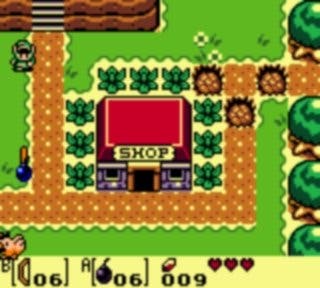
Meanwhile, some underground sections of the game place Link in Goomba-filled side-scrolling caves reminiscent of the Mario series' underworld levels, which echo with a similar thumping bit-tune bass line.
These not-so subtle nods make some sort of sense however, explained away in any questioning player's mind by Link's Awakening's dreamlike setting. They serve as a constant reminder that the world around them is far from real.
But the game excels in more than plot-twists and eyebrow-raising references. With the regular cast resting, Link's Awakening sees players get acquainted with the characters of Marin and her father Tarin (predecessors in design to the more famous Malon and Talon found in Ocarina of Time, just as Link's guiding owl is clearly an inspiration for Kaepora Gaebora).
Marin is a central figure in Link's Awakening and her relationship with the player is one of the game's highlights. The pair develop a touching closeness that is reminiscent of how Link and Illia interacted in Twilight Princess, but sustained throughout far more of the game's storyline. Marin is always there to visit and, in one of the game's standout moments, briefly accompanies Link on his journey.
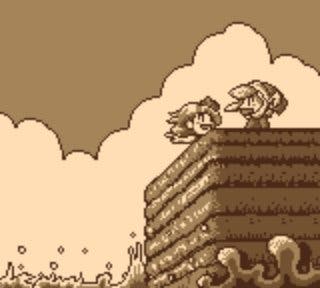
Here, Marin's character is expanded on in one of the game's only cut-scenes. The tale she tells of her life is achingly sad; of growing up on the island and wanting, like Link, to leave, to be free to soar away from Koholint's shores like one of the island's many seagulls.
So when it comes to leaving this vivid land full of character and characters, it is not without sadness the deed is done. As Link plays his collected array of instruments, as the Wind Fish finally wakes and Link's surroundings begin to disappear around him, Nintendo shows you the places and people that you're leaving behind. The kids throwing ball outside of the Mabe Village Library, the spot on the beach where you first picked up your sword, and finally, Marin.
More than most games, it was a world I didn't want to leave and where the finality of the ending brought about a feeling of loss. Of course, you could turn it back on again to return to a previous save point, but it was never the same.
Despite its bizarre-sounding story and change of setting, Link's Awakening is far from an offbeat handheld spin-off. Its story, heart and humour cements it as one of the series' finest offerings and sets the stage for the games to come. It's the first time you're allowed to fish in a Zelda game, the first time you're sent on a trading quest, and the first time you'll learn songs to play on an ocarina. As my own introduction to the series, Link's Awakening was a great place to start.


